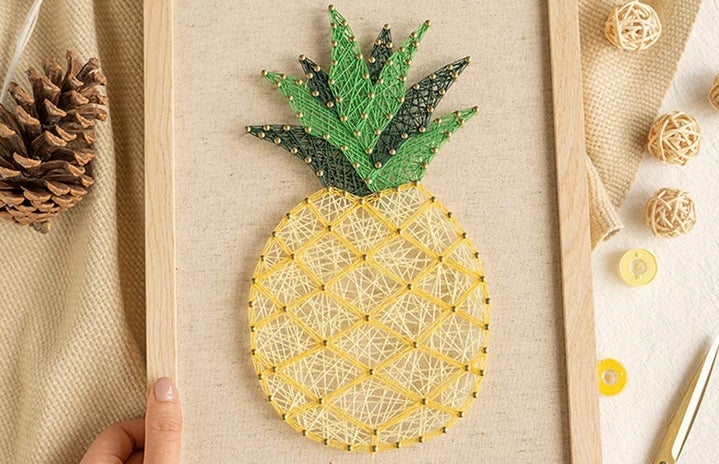Thinking of starting embroidery? Here’s five tips, tricks and shortcuts to save you time and effort.
1. YouTube
Embroidery is not really something you can learn from reading a craft magazine or even, to an extent, from watching another person. I tried to learn embroidery from my mum, but I ended up being permanently bent over her squinting, trying to see and memorise the tiny stitches she was making. Feeling frustrated, I turned to YouTube and never looked back! There are hundreds of amazing videos teaching you step by step how to do the simplest to the most complex stitches, videos that you can watch on repeat until you get it. One channel that I particularly recommend is HandiWorks.
2. Invest in a lightbox!
I wish I had bought one sooner! It is a particularly good investment if you want to start selling your embroidery. When my sisters and I started selling our t-shirts, we quickly realised we needed to drastically cut our production time in order to make any money and buying a lightbox has enabled us to do this by ten folds. Click here to see the lightbox I use. I will talk more about how I use it in the paragraph below!
3. Buy some fabric pens
Click here to see the fabric pen I use, it takes 2-7 days to disappear. These, along with your lightbox, are a match made in heaven. You take your design that is fit to scale, and Sellotape it to your lightbox using Scotch Magic Invisible Tape, that doesn’t leave marks. Then I clip my t-shirt on top of my lightbox and trace my design onto my t-shirt using my fabric pen. When I need to speed up the dissolving process, for example, if I have an order that needs to be sent out that still has pen marks on it, I use the antidote pen. This pen instantly removes the mark, so you don’t have to wait for it to dissolve by itself.
4. Tailors chalk
I love embroidering on a black base, the design ends up looking very bold, but it is a test of patience. This is because fabric pen does not show up on black fabric, so I decided to buy some Tailors chalk and it worked! It doesn’t render as much detail as the fabric pens do and the nature of chalk means that it comes off very easily so you have to keep reapplying it. If you are new to embroidery I would advise you not to attempt embroidering on black fabric until you gain experience, as it can be very tricky.
5. Splitting the thread
For fine and detailed designs, try splitting the thread. The average thread is made up of around six individual threads. Use between one and three threads when trying to create a very complex detailed design.
I hope that this has given you some confidence to pick up your needle and start embroidering, I promise you once you start you won’t be able to stop! Don’t forget to check out mine and my sisters embroidery at www.instagram.com/sisters_who_sew and at www.sisterswhosew101.etsy.com



